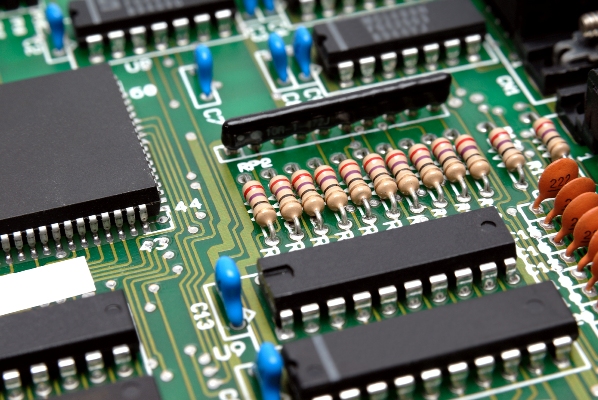History of Computers - PCB
Page created by Michael He
Printed circuit boards are pieces of non-conductive sheets which have etched copper sheets running throughout the board. The boards often have multiple layers in them, so what is visible on the top and bottom is not always what is between the layers. They support and connect all attached electrical components such as processors, capacitors etc. into a compact and durable unit. The market for PCB's was $600 million in 2012 [1].

Origin
The development of what we now know as PCB's originated in 1930's when Austrian engineer Paul Eisler created a PCB for a radio set. During World War II, the US used PCB's in proximity fuses [2]. After the war, the US released the invention to the general public and PCB's became commercially widespread by the 1950's.
Significance
PCB's provide a relatively cheap and reliable way to make electrical components. The small size and organization of the PCB, compared to the lattice work of wires in older circuits, is one reason why modern day electronics can be so small yet effective.
Uses
Nowadays, PCB’s are found in almost every electrical device and have become an integral part of our lives. They are incredibly important in many areas. For example, PCB’s contribute significantly to the reason why smartphones can be so small and why computers don’t take up entire rooms. Also, due to their compact size and durability, the military uses them in guided munitions such as missiles and guided artillery rounds [3]
External Links
http://history-computer.com/ModernComputer/Basis/printed_board.html
https://en.wikipedia.org/wiki/World_War_II
References
- ↑ http://hardhero.com/the-importance-of-printed-circuit-boards/
- ↑ Charles A. Harper, Electronic materials and processes handbook, McGraw-Hill,2003 ISBN 0-07-140214-4, pages 7.3 and 7.4
- ↑ http://www.goldphoenixpcb.com/html/Support_Resource/others/arc_110.html